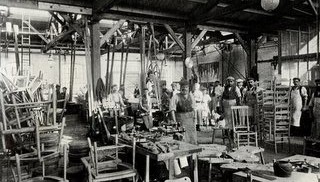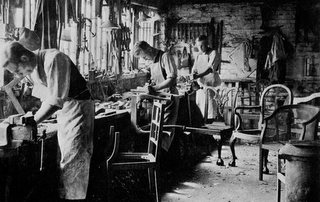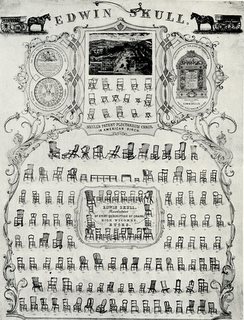A chair has more demanded of it than any other item of furniture.
Leaving considerations of design, beauty or elegance aside for the present, a table needs only to be stable enough for its function; a cabinet may have doors and drawers that must operate efficiently and repetitively but otherwise has only to sit in the one place.
But a chair, and I am thinking here of dining chairs or chairs that are used at a table, desk, work-station or similar, must be comfortable - comfortable over a period of perhaps many hours of being sat on, and above all, be strong, and very strong, without being heavy.
Think about it: a dining chair must, each and every time it is used, be capable of being moved back (dragged) from the table, sat on and then, with its occupant's weight upon it, moved (jerked) forward into the desired position relative to the table.
The seated person will then move constantly, redistributing their weight in a manner that may test every joint of the chair: and it must be capable of having this done to it again and again and again, thousands and thousands of times over its lifetime, without showing any sign of the stresses that it has endured.
Now, for the commission furniture maker of once-off items such as myself, this poses problems.
Consider a commission for a wooden table and six wooden chairs.
The simplest table is likely to have nine components while the simplest chair will have a minimum of ten components.
So, in numeric terms, there is more to making one of the chairs than there is in making the table. - Table, nine components; six chairs, sixty components.
Consider these facts in the context of the cost / benefit for the client and then apply the same calculation from the maker's perspective.
Let us say that the table attracts 2.5 units of cost.
Experience informs me that this cost / benefit calculation is most often met with equanimity and acceptance by the client: from the client's perspective, it seems, a large item can sustain a large price.
Now, clearly, the volume of material required for the table is vastly greater than the volume of material required for a chair, or even six chairs.
But the cost of converting, accurately (and for the reasons indicated above accuracy for chair components is an imperative) a large number of small components is greater than converting a smaller quantity of large ones.
So, from the makers perspective, the unit of cost of one chair should, rightly, be at least that of the table.
But to present a potential client with an estimate of 2.5 units of cost for one chair would be met with alarm, consternation and certain rejection because, wise as all clients are, they spot that the cost for six (small) chairs would be six times greater than the cost of the one (big) table.
Again experience informs me that to present a client with an estimate of even .5 units of cost is still met with resistance and most often rejection.
So where does this leave the proposed contract?
In my case, having explained the rationale for the high cost of once-off, hand-made chairs I offer two solutions.
I offer them a chair of my design that I have batch produced by a chair maker which I can sell-on at just below .5 units of cost by taking no margin myself.
In other words, the chairs are a loss-leader for getting the commission for the table!
Batch produced Stick-back Chairs, of my design, in use in our
own home.
Or I encourage the customer to try to find a mass-produced chair that they like, the unit cost of which will be small fraction of mine as a consequence of the economies of scale in its production. (I have seen many an acceptable chair offered for sale at a price that is less than the cost of the materials if I were to make it.)
And I do not believe that this difficulty surrounding making chairs at an affordable price is a circumstance or situation.
Furniture making and chair making are plainly not mutually exclusive activities but since the eighteenth century, at least, chair making has, increasingly been separate from general furniture making for the very reasons I outline above.
Chairmaking became, I suspect, one of the first examples of mass-production.
The chair maker developed a number of designs to complement the prevailing furniture styles of the day, that could be made in large numbers and offered to the emerging retail furniture trade.




